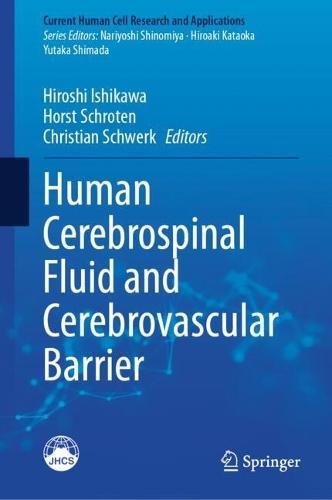Overview
This book offers a basic understanding of the complex mechanisms that protect the brain from harmful substances while still allowing for essential functions such as nutrient transport and waste removal. It explores the blood-cerebrospinal fluid barrier (BCSFB) and the blood-brain barrier (BBB) in depth, focusing on the latest research, innovative techniques, and unique perspectives from researchers worldwide. The book also examines the clinical relevance of brain barrier dysfunction, with a particular focus on multiple sclerosis (MS) and the potential role of brain barriers in the development of MS, intricate relationship between brain barriers and infectious diseases and much more. With contributions from experts in neurobiology, microbiology, and biophysics, this book provides a multidisciplinary perspective. Extensive research has been conducted on the cerebrovascular or cerebrospinal fluid barrier function. The recent development of a functional epithelial cell line derived from a human choroid plexus papilloma has paved the way for an in vitro model of the choroid plexus, which has been instrumental in elucidating the interplay between infection, metabolism, physiological functions, and disease. This book is an effort by the Editors to raise public knowledge of the cerebrovascular and cerebrospinal fluid barriers. With broad coverage of topics in ""Human Cerebrospinal Fluid and Cerebrovascular Barrier"", it is ideal for researchers studying cerebrovascular or cerebrospinal fluid barrier interested in staying up to date on the latest developments. Healthcare providers and researchers working to develop new treatments for MS, infectious diseases of the central nervous system and other neurological disorders will also value this book. The book provides students of medicine, pharmacy, biology, and engineering with a comprehensive understanding of the structure and function of brain barriers. Those seeking a thorough introduction to the field will also find the book enjoyable.
Full Product Details
Author: Hiroshi Ishikawa ,
Horst Schroten ,
Christian Schwerk
Publisher: Springer Verlag, Singapore
Imprint: Springer Verlag, Singapore
Edition: 2025 ed.
ISBN: 9789819794942
ISBN 10: 9819794943
Pages: 248
Publication Date: 12 April 2025
Audience:
Professional and scholarly
,
Professional & Vocational
Format: Hardback
Publisher's Status: Active
Availability: Manufactured on demand

We will order this item for you from a manufactured on demand supplier.
Author Information
Associate Prof. Christian Schwerk: Associate Prof. Dr. Christian Schwerk is a molecular and cellular biologist heading the infectious diseases research laboratory at the Department of Pediatrics, Pediatric Infectious Diseases, of the Medical Faculty Mannheim, Heidelberg University. He obtained his doctorate from the Institute of Cellular Biology (Cancer Research) at the University Hospital Essen, Germany and has worked in several international research institutions. Dr. Schwerk has published more than 70 peer reviewed publications and serves on the editorial boards of international journals. Prof. Horst Schroten Professor Dr. Horst Schroten is Director of the University Children's Hospital, Medical Faculty Mannheim, Heidelberg University. His scientific focus is on research into the pathogenesis of infectious diseases, in particular bacterial and viral meningitis. After holding a professorship for pediatric infectiology at the University of Düsseldorf, he was appointed to the Chair of General Paediatrics at the Mannheim Medical Faculty Heidelberg University on March 1, 2008. From 2001-2005 he was the President of the German Society for Pediatric Infectious Diseases and has published more than 200 peer-reviewed scientific publications. Prof. Hiroshi Ishikawa Professor Hiroshi Ishikawa graduated from The Jikei University School of Medicine in 1968, received Medical doctor Science 1972. In 1974, associate professor at Tohoku University School of Medicine. In 1985, appointed chairman of the Department of Histology and Embryology at The Jikei University School of Medicine. From 2003 to 2015 president of the Japanese Society of Human Cell. Since 2003 he has been on the Human Cell editorial board. He has deposited 84 cell lines in the Riken Cell Bank and has published over 490 papers. In 1984, he received the Research Encouragement Award from the Japan Endocrine Society, and since then he has received numerous academic awards. Currently, he has established a clinical regenerative medicine laboratory at the Department of Neurosurgery, University of Tsukuba. He conducts research on regenerative medicine based on embryology, especially on the treatment of cerebral infarction by transplanting differentiation-induced nervous system cells derived from human dental pulp.



